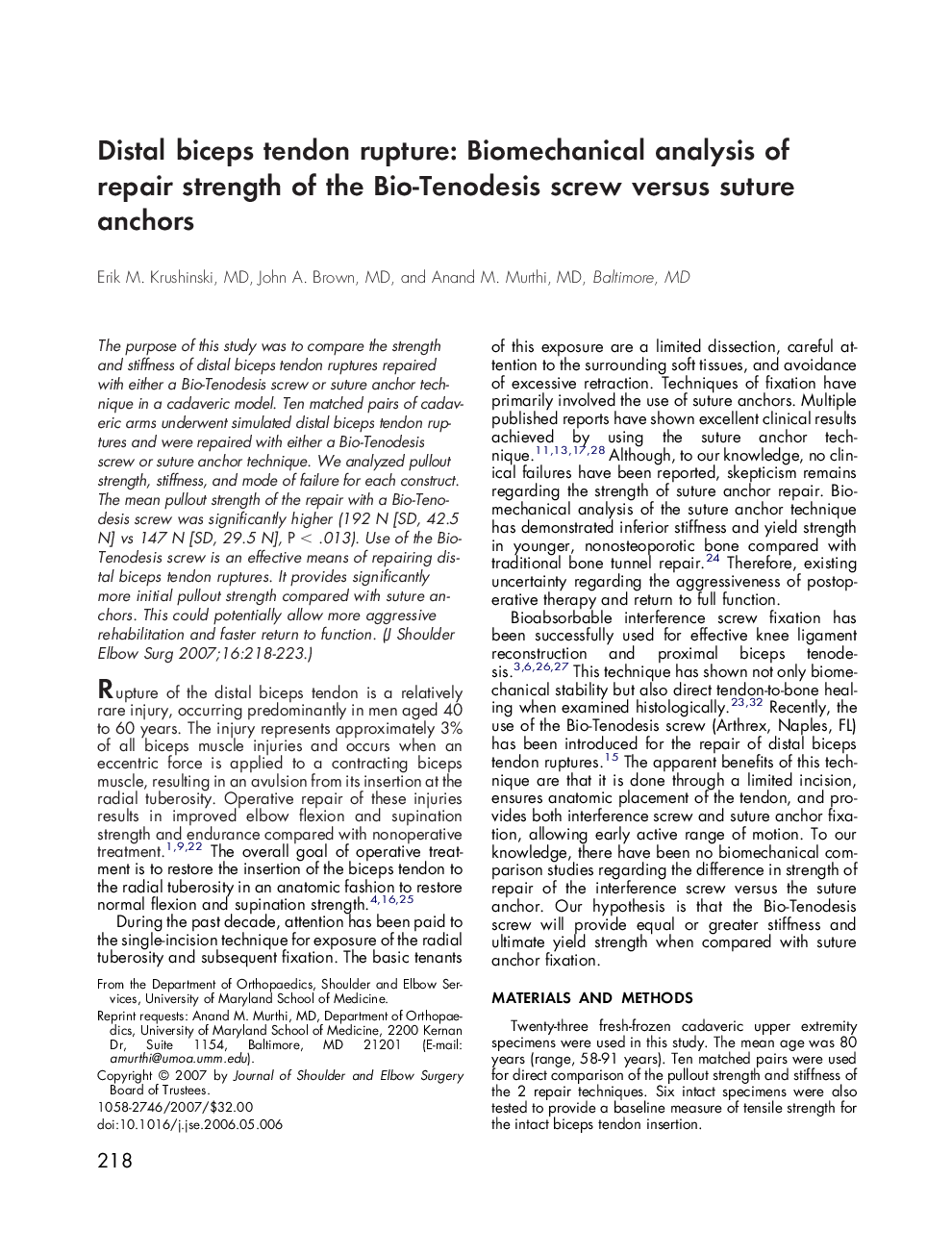| Article ID | Journal | Published Year | Pages | File Type |
|---|---|---|---|---|
| 4076273 | Journal of Shoulder and Elbow Surgery | 2007 | 6 Pages |
The purpose of this study was to compare the strength and stiffness of distal biceps tendon ruptures repaired with either a Bio-Tenodesis screw or suture anchor technique in a cadaveric model. Ten matched pairs of cadaveric arms underwent simulated distal biceps tendon ruptures and were repaired with either a Bio-Tenodesis screw or suture anchor technique. We analyzed pullout strength, stiffness, and mode of failure for each construct. The mean pullout strength of the repair with a Bio-Tenodesis screw was significantly higher (192 N [SD, 42.5 N] vs 147 N [SD, 29.5 N], P < .013). Use of the Bio-Tenodesis screw is an effective means of repairing distal biceps tendon ruptures. It provides significantly more initial pullout strength compared with suture anchors. This could potentially allow more aggressive rehabilitation and faster return to function.
